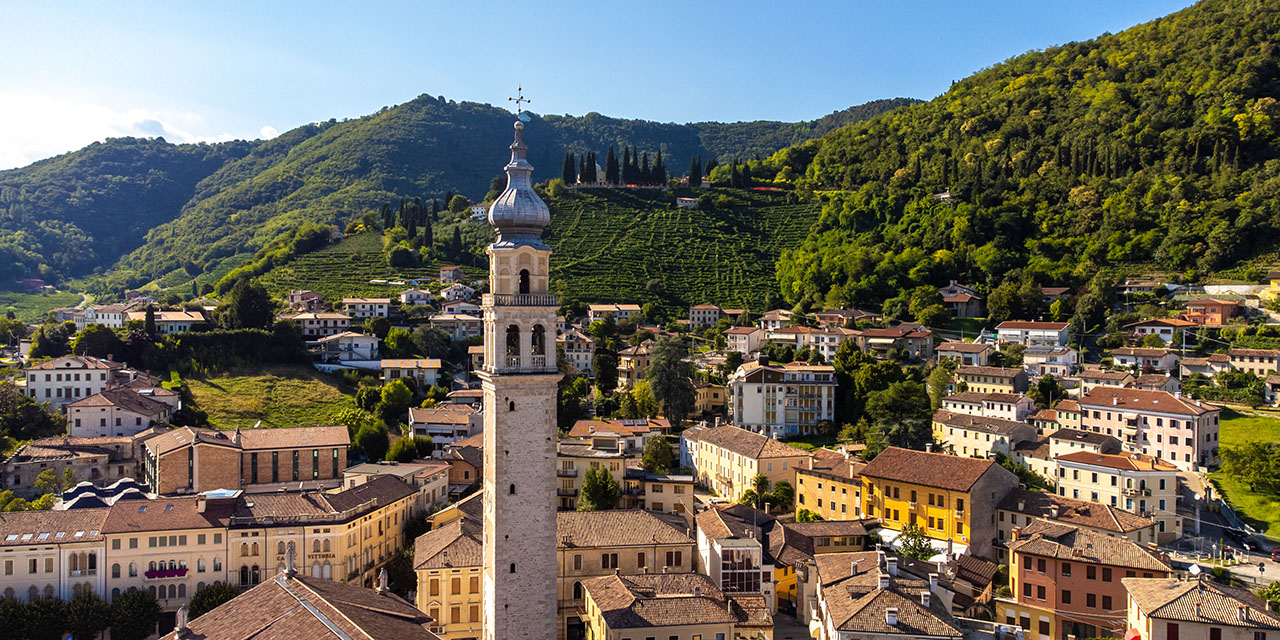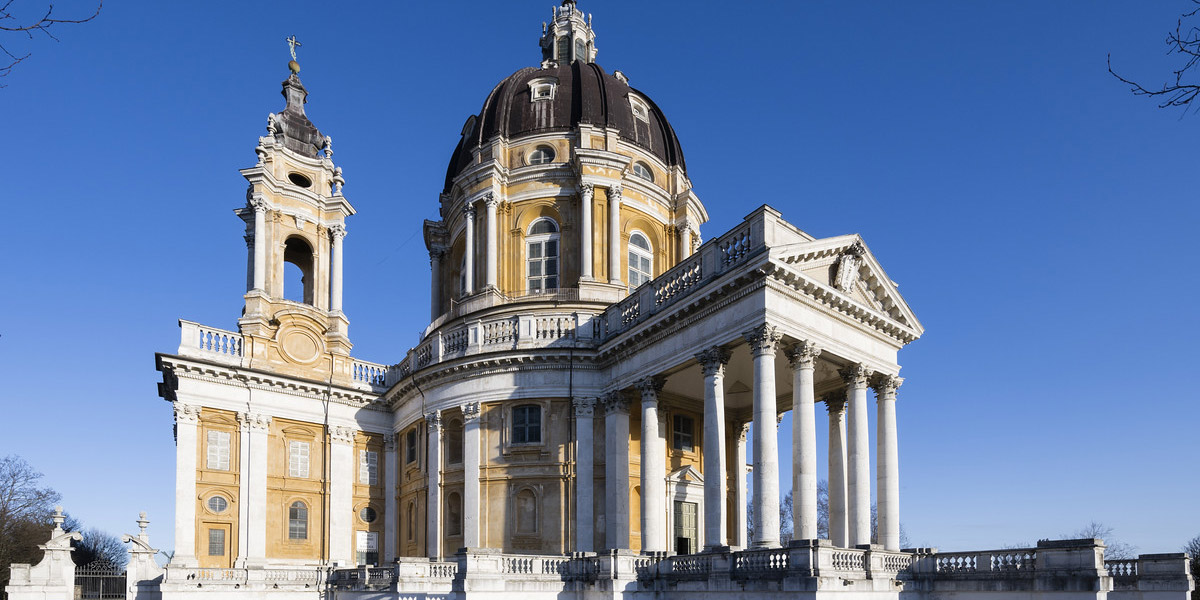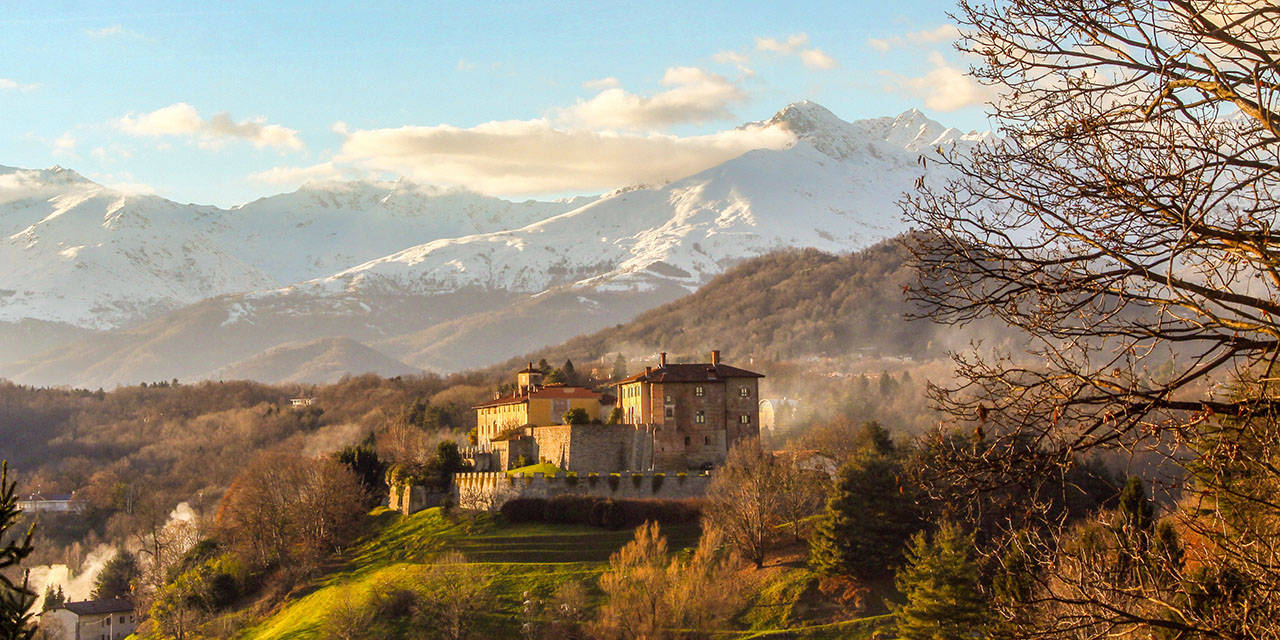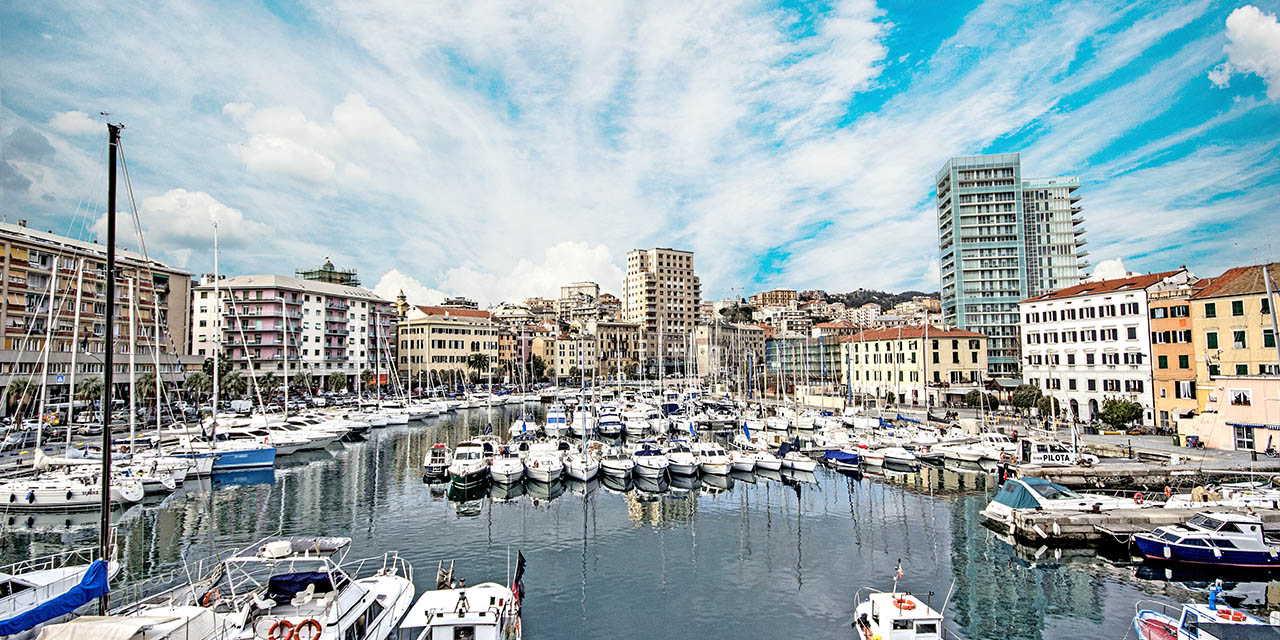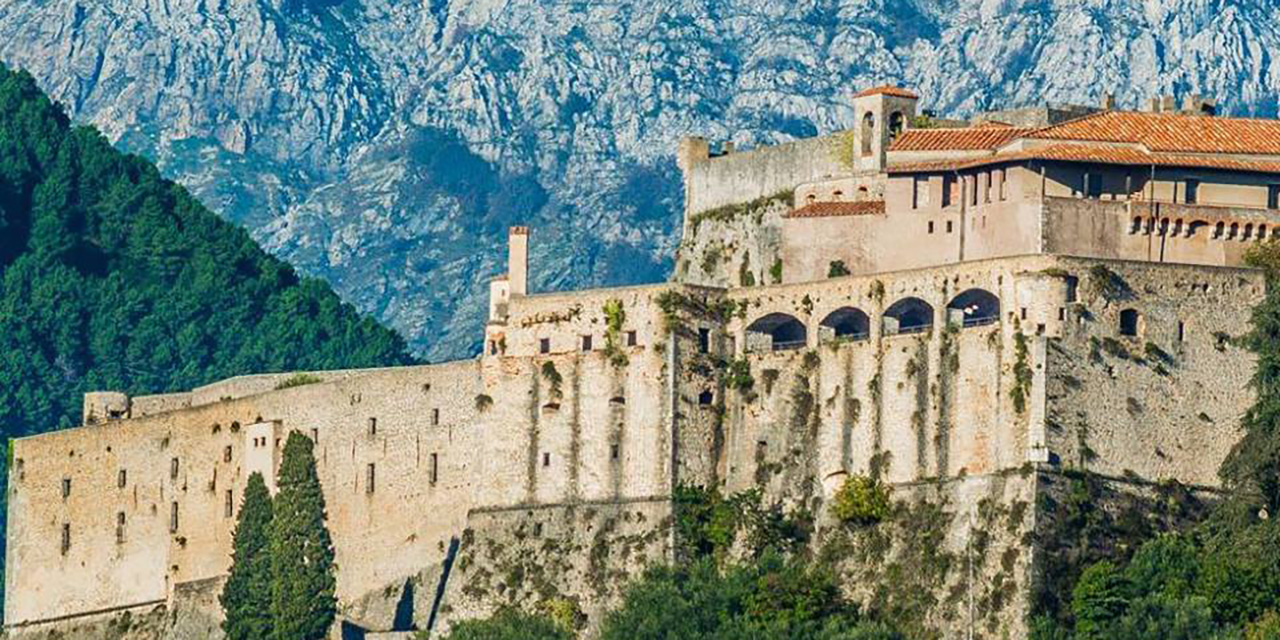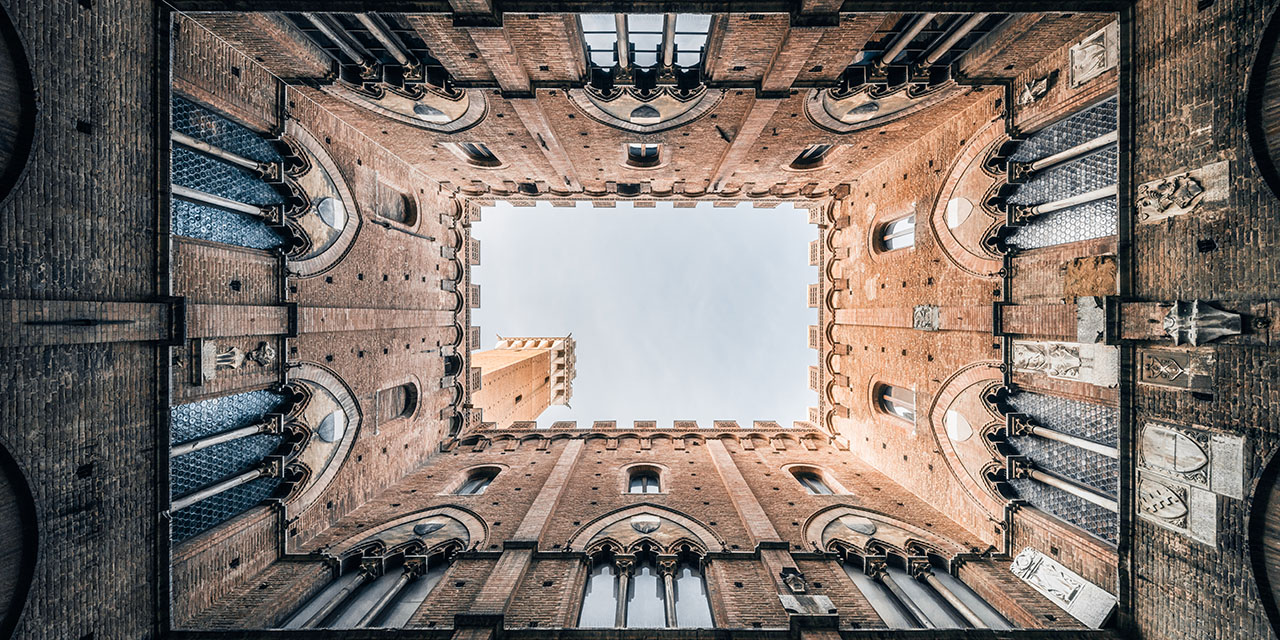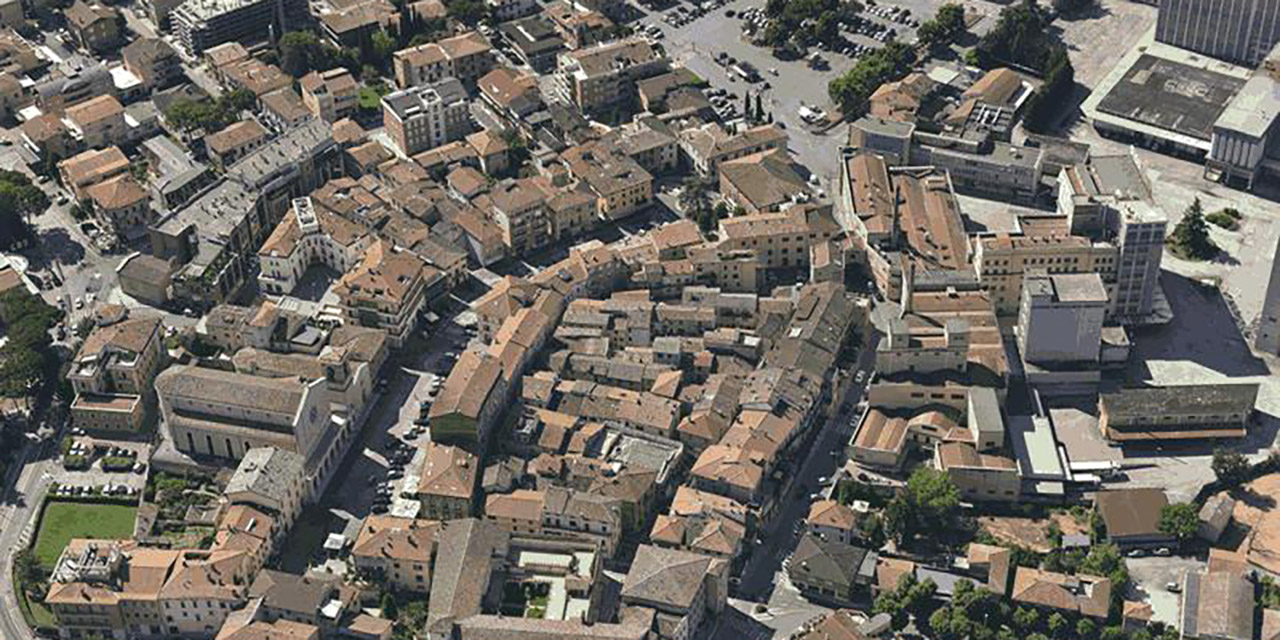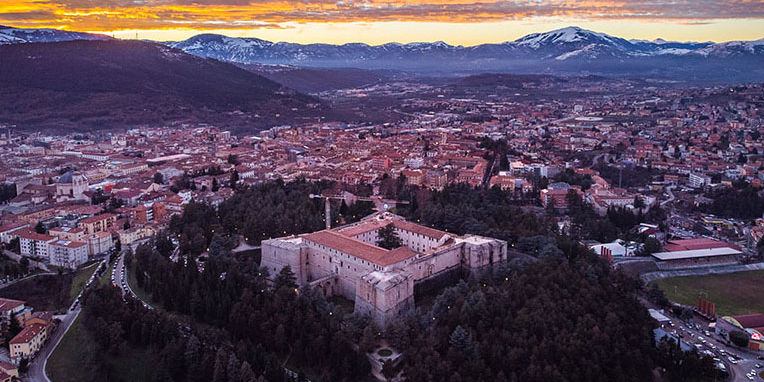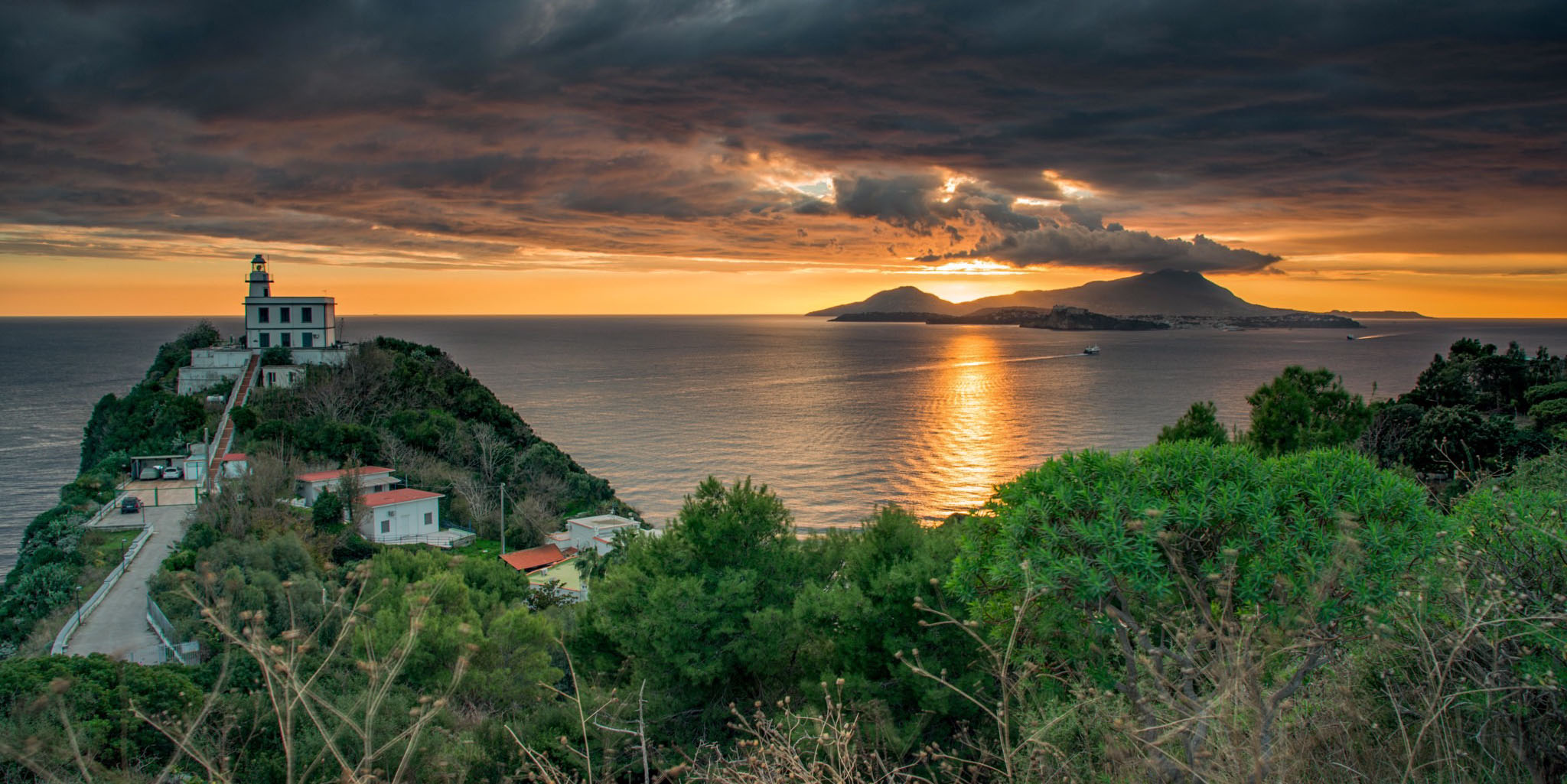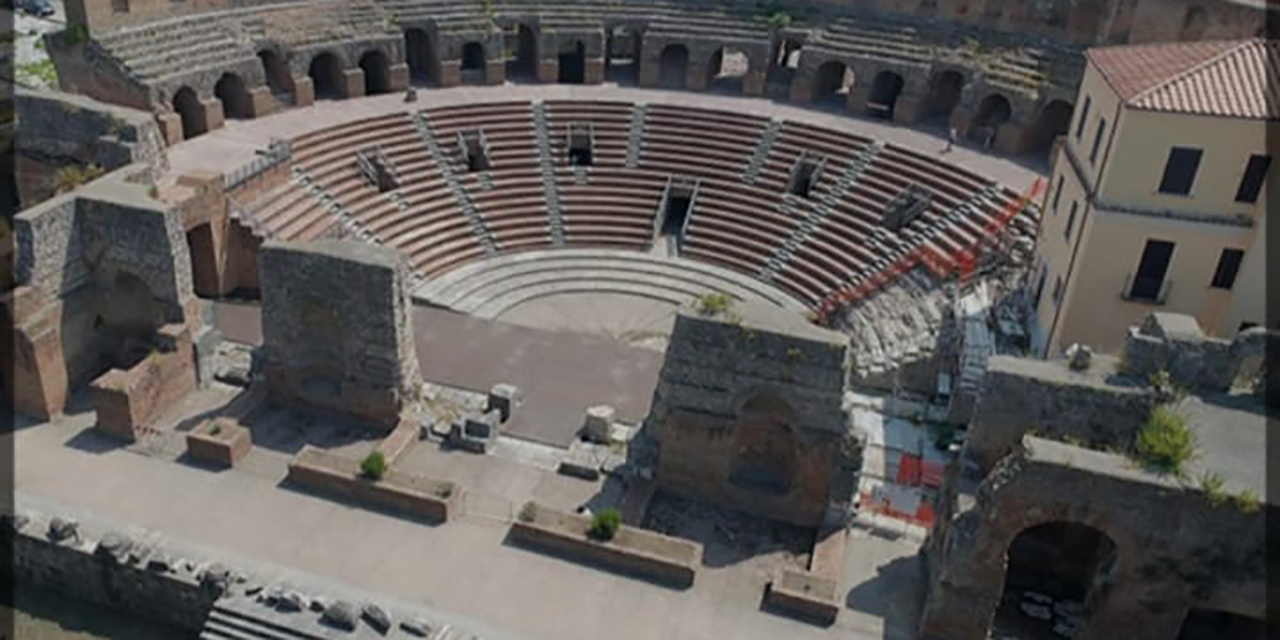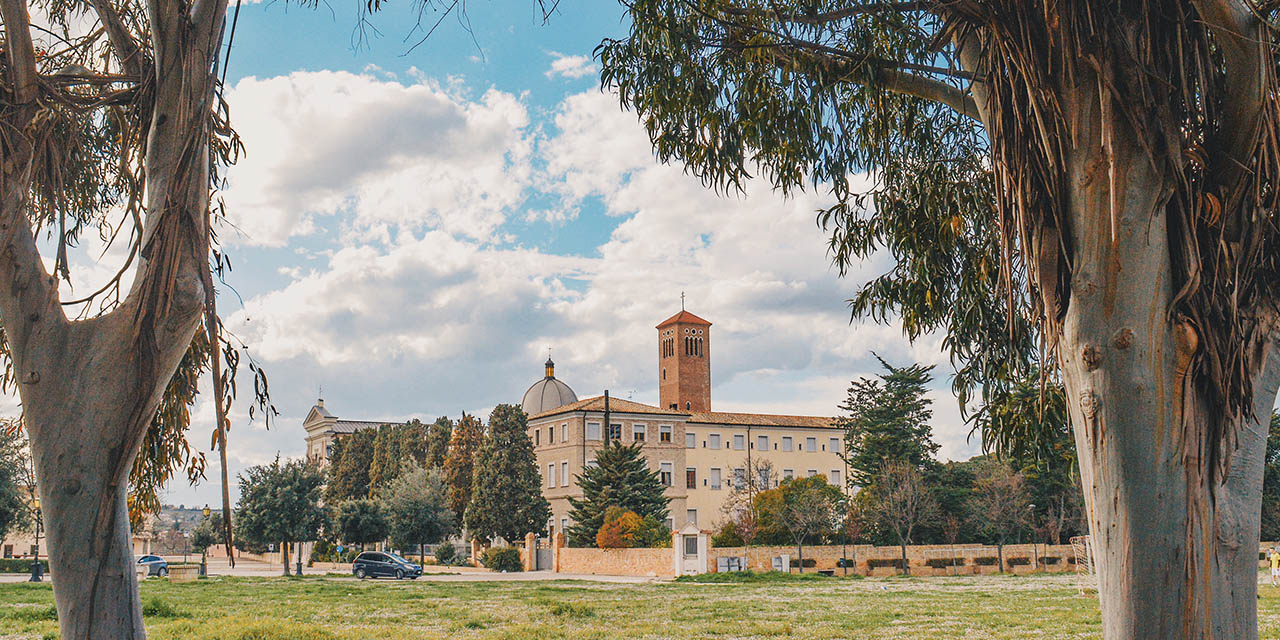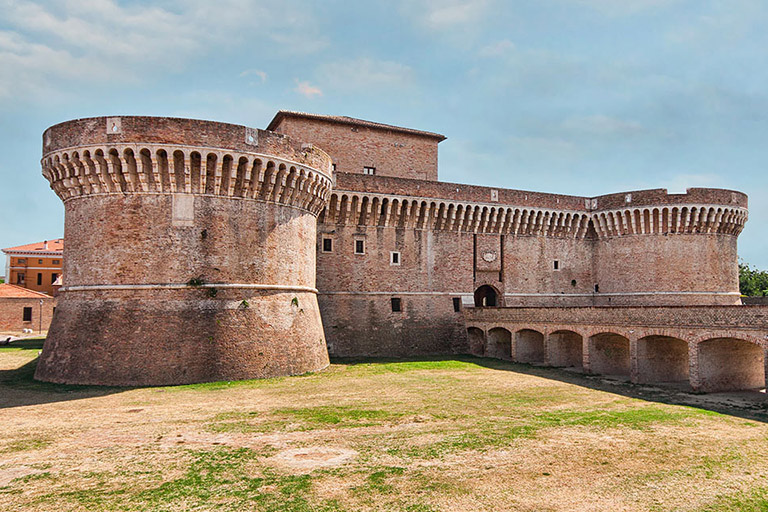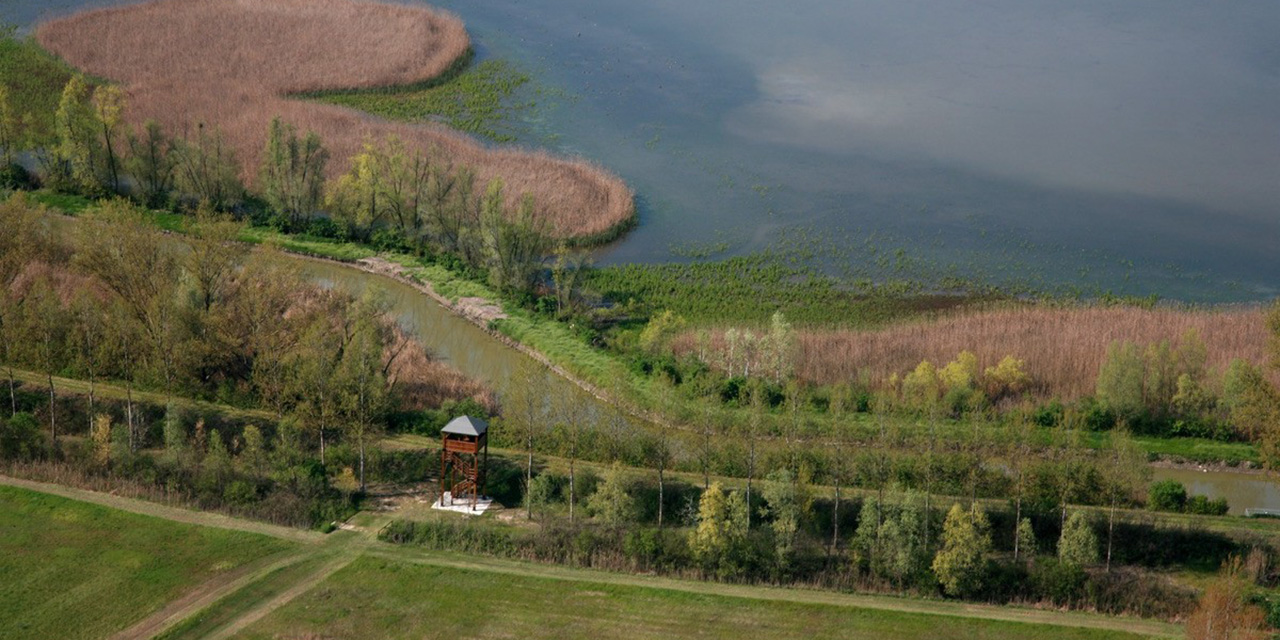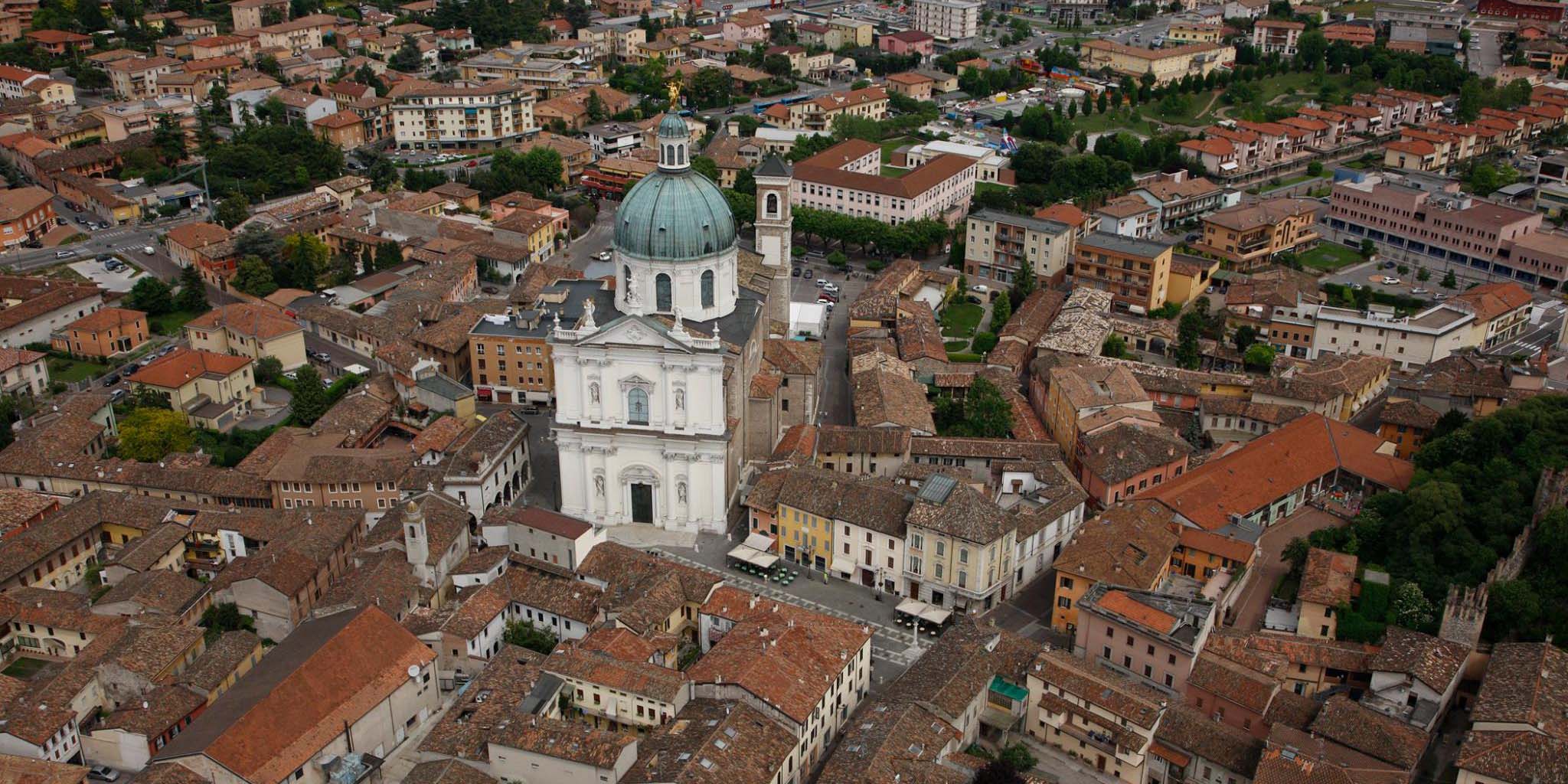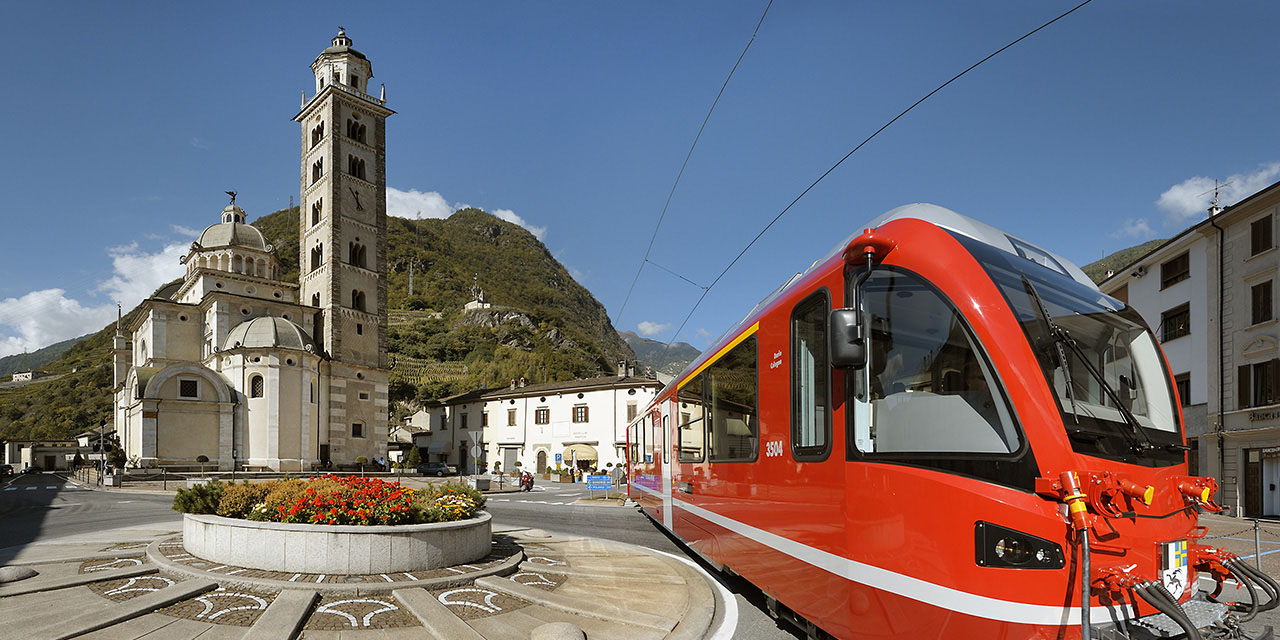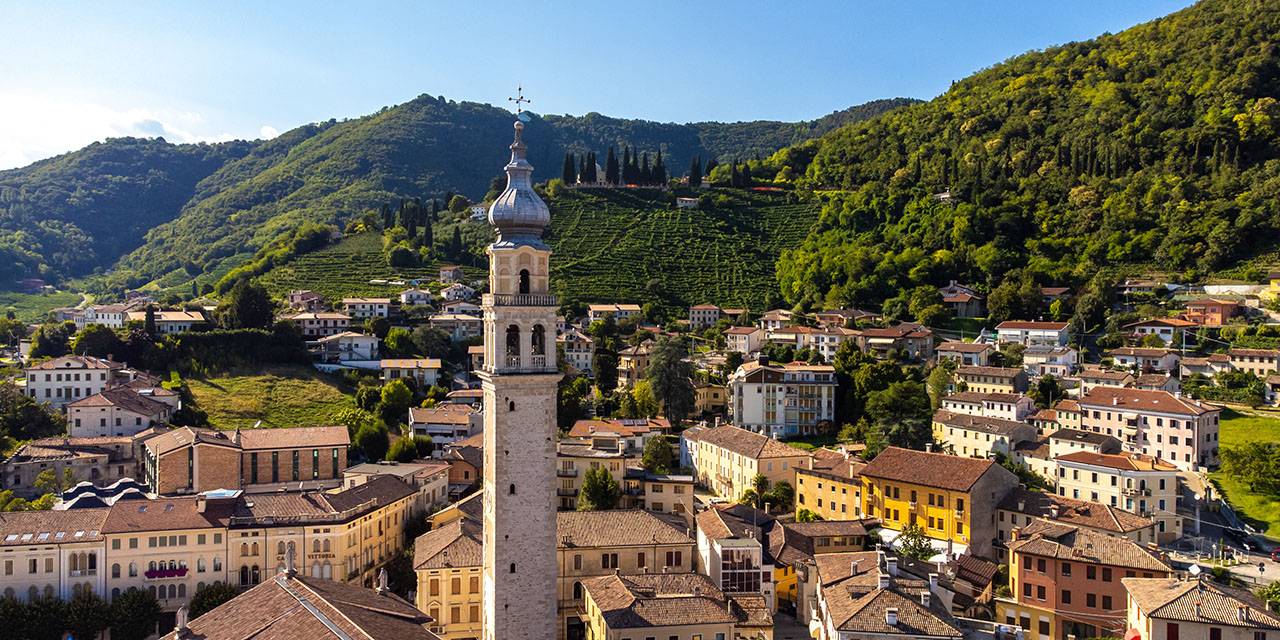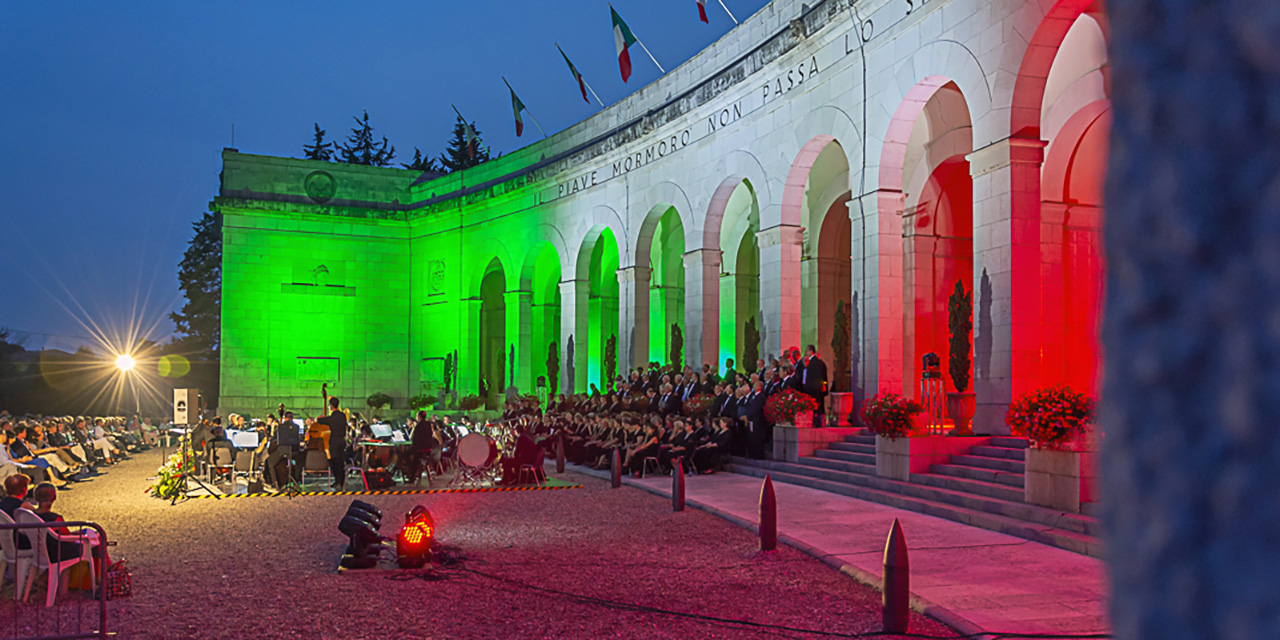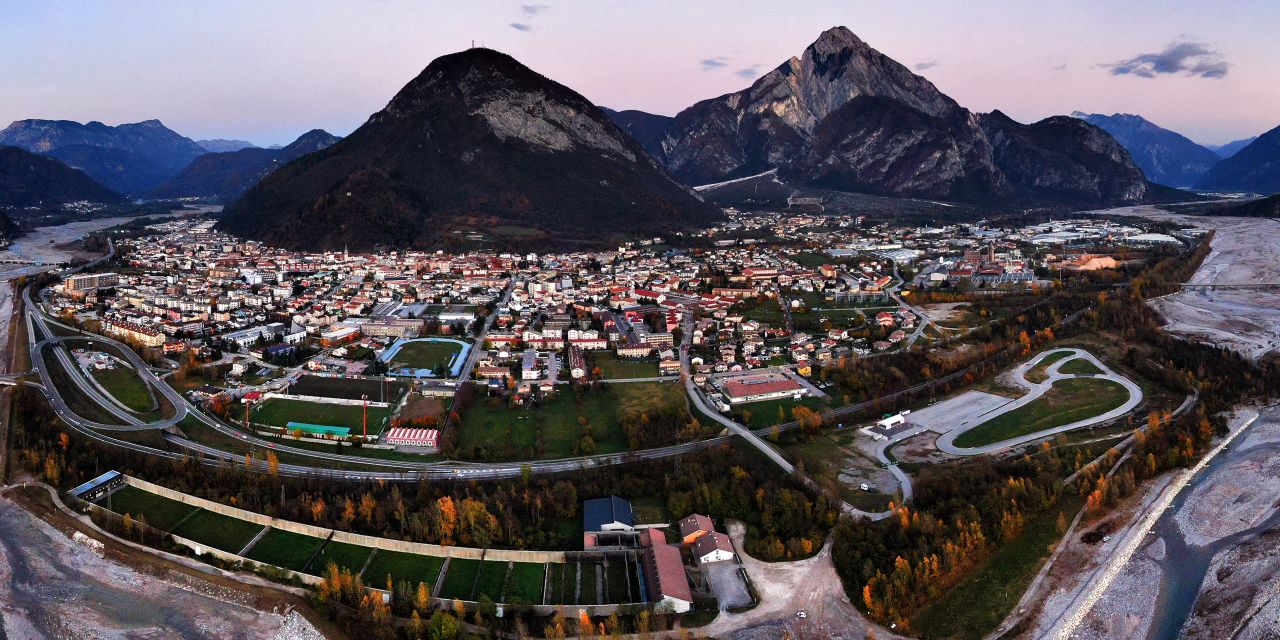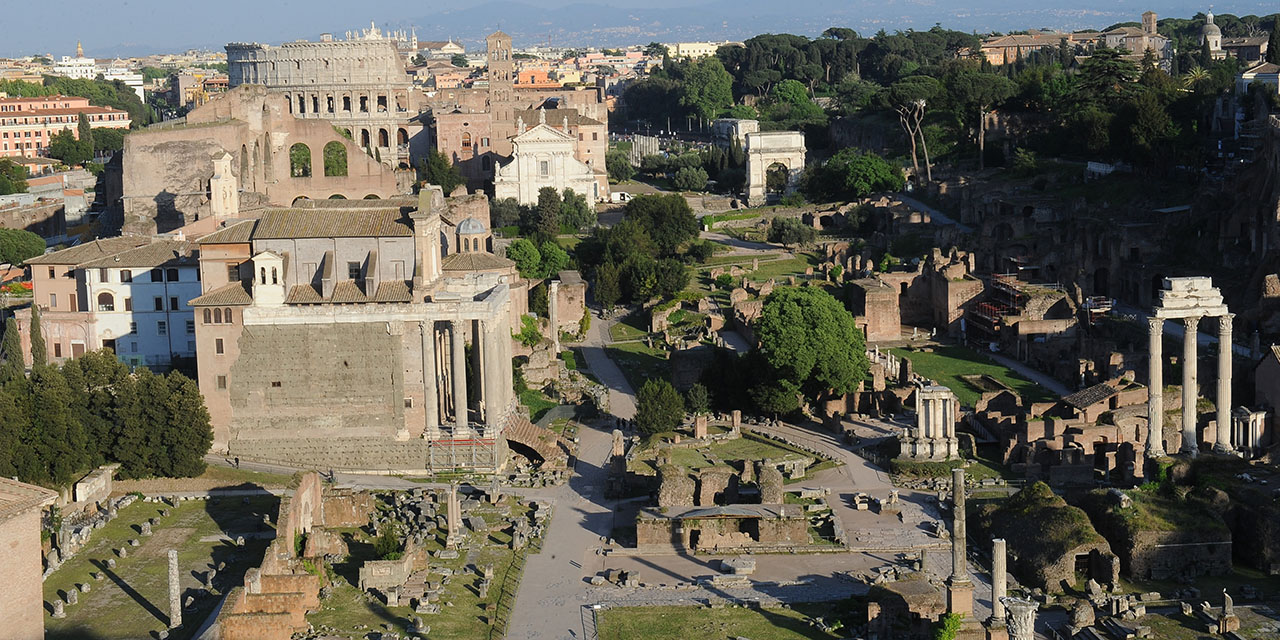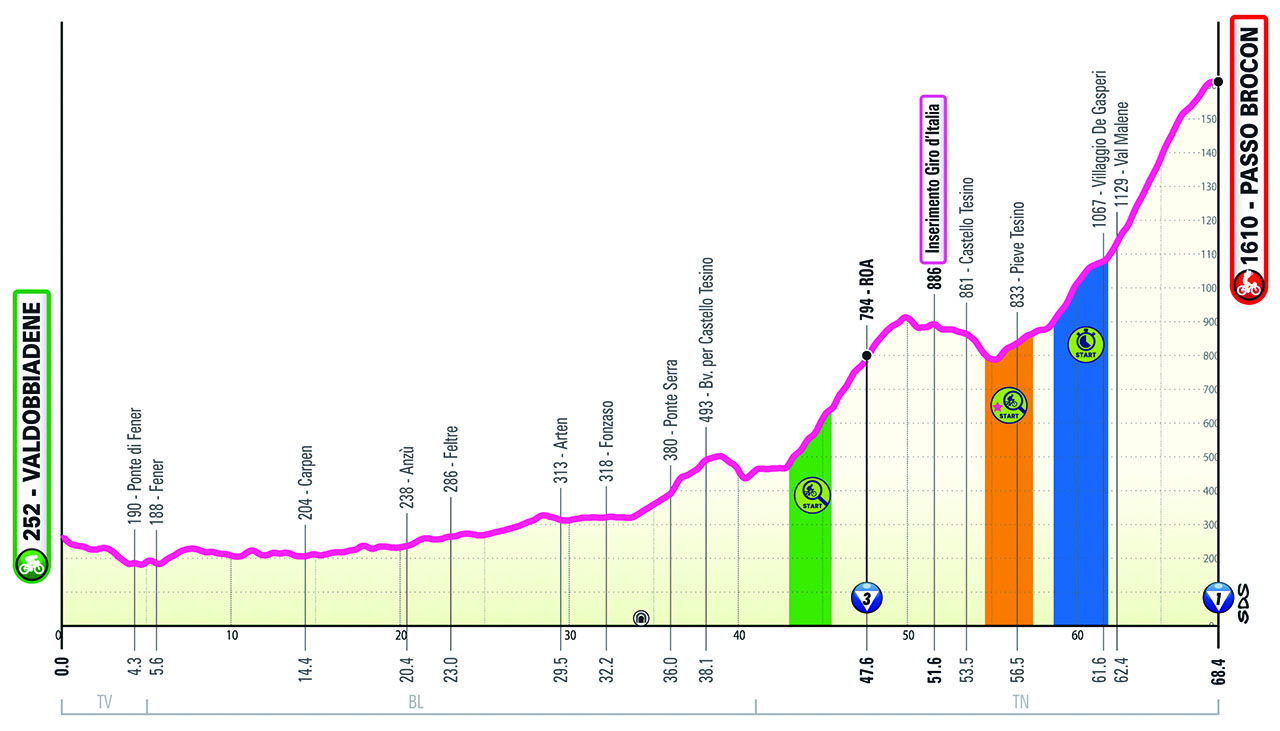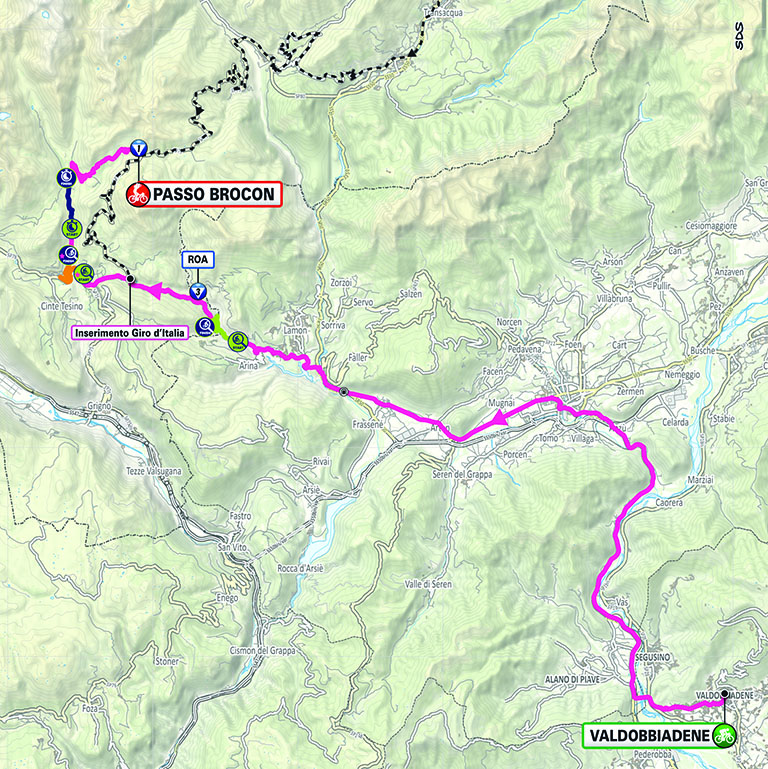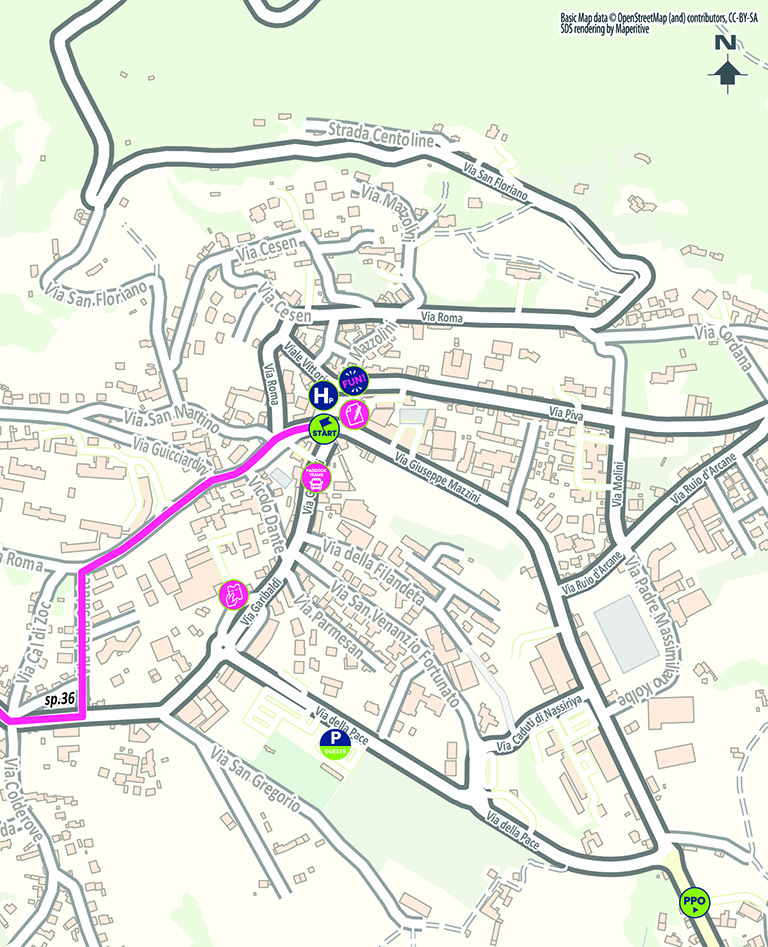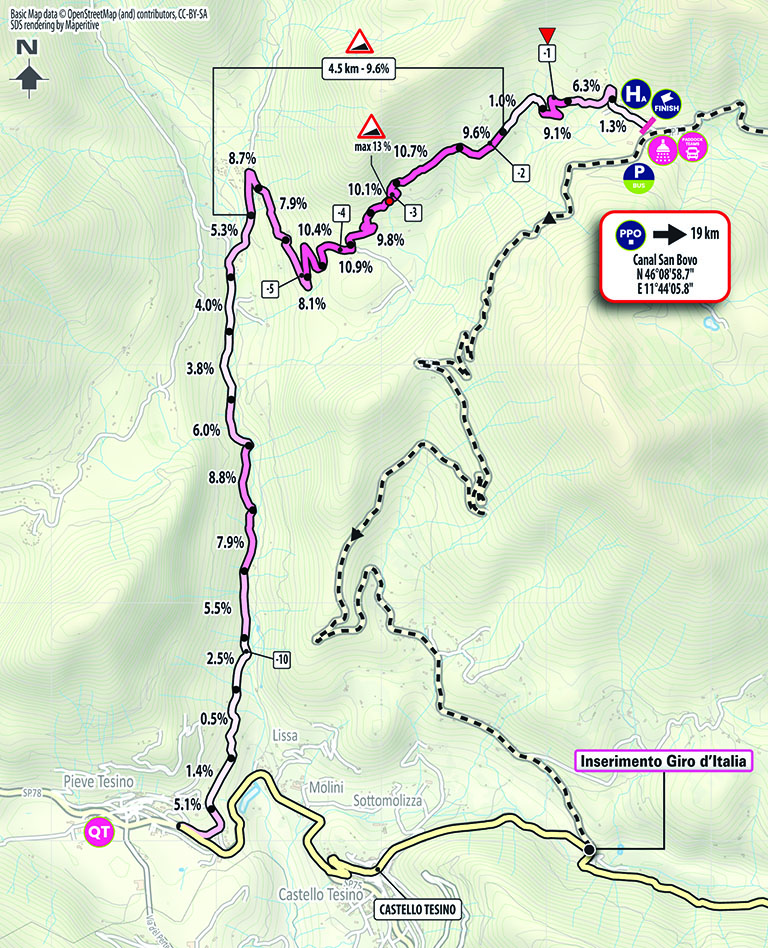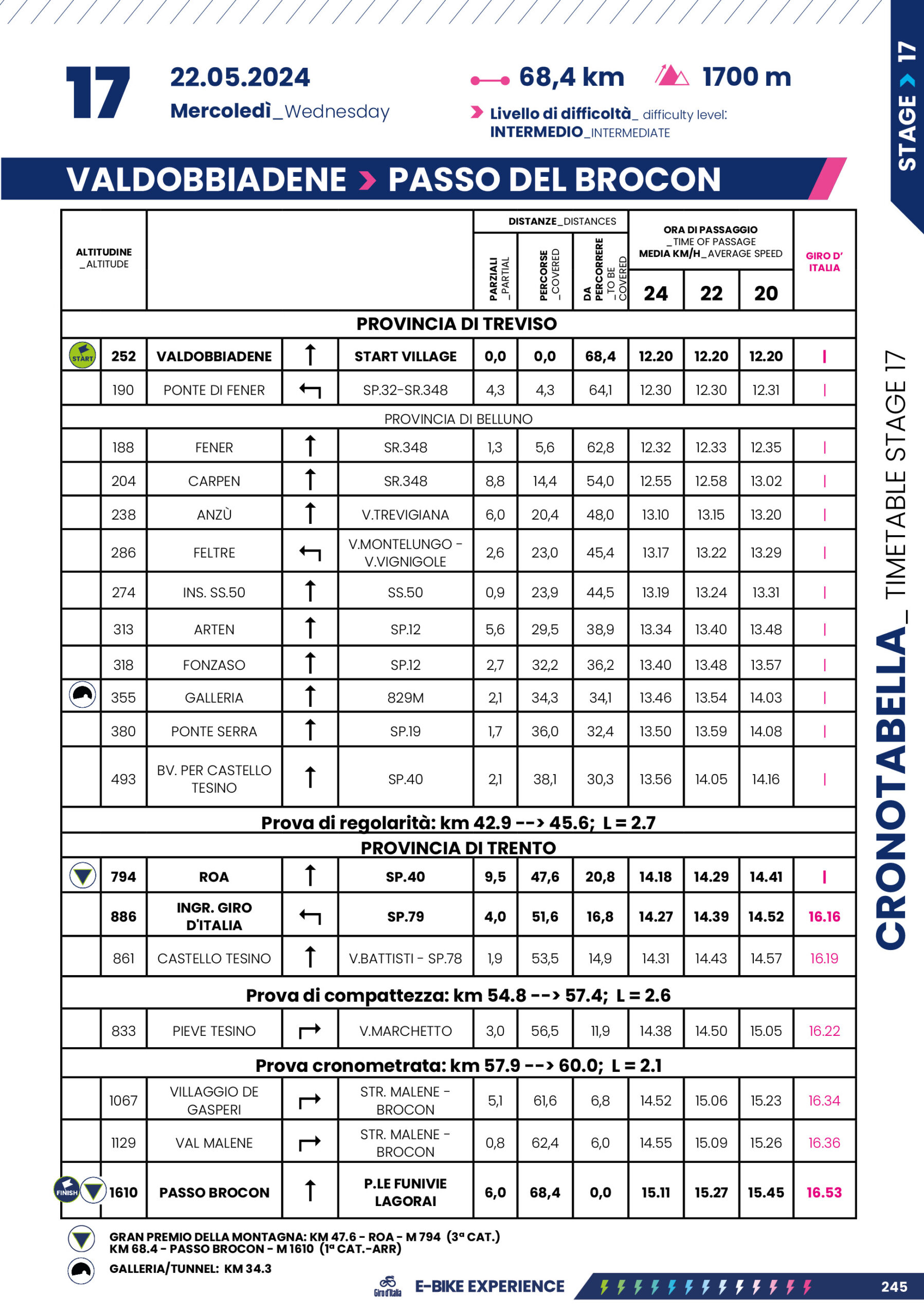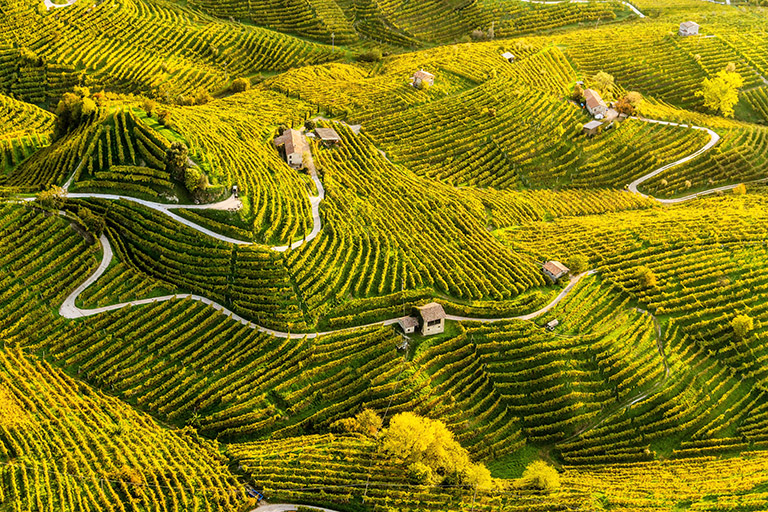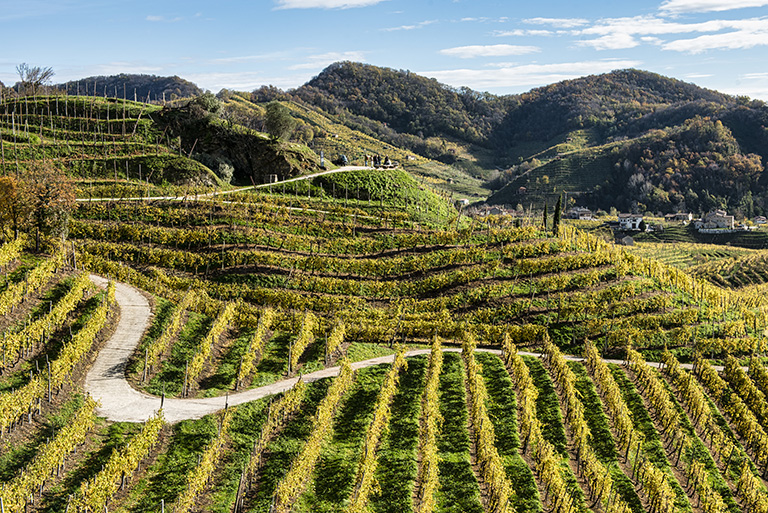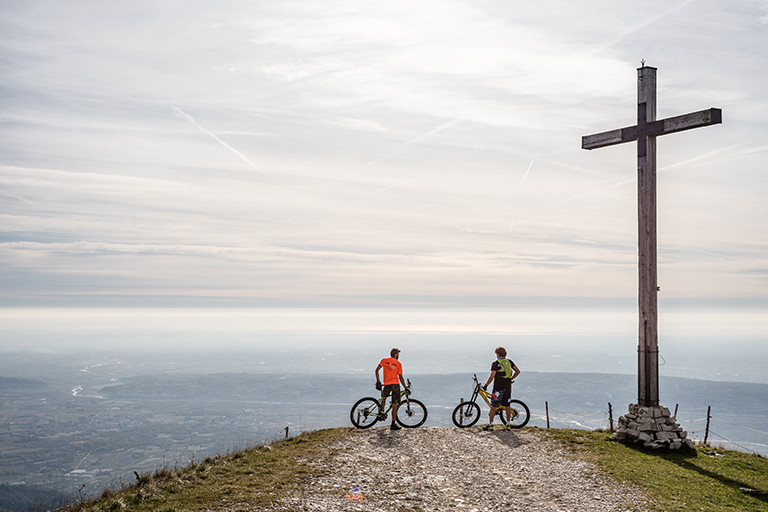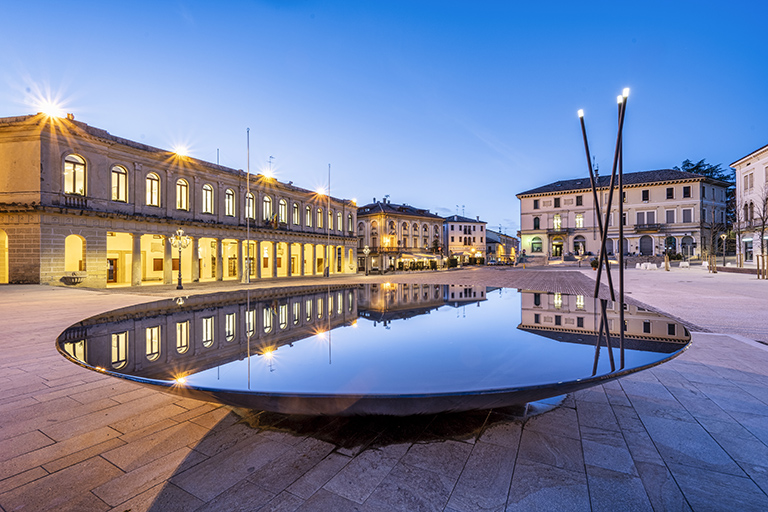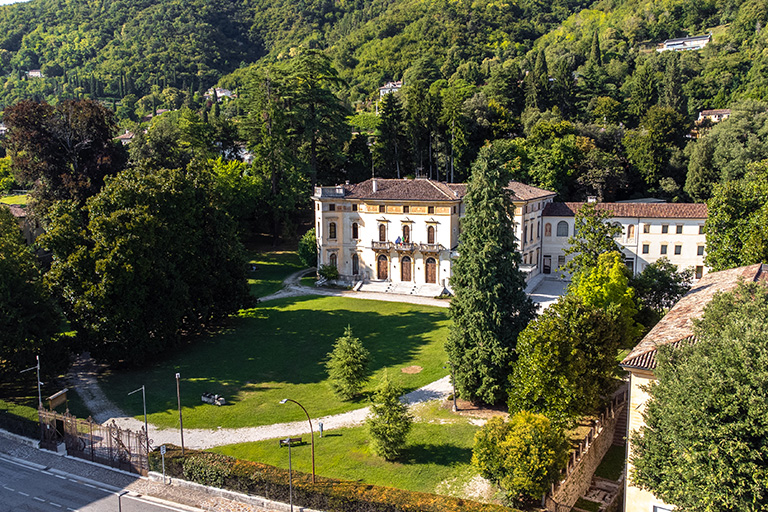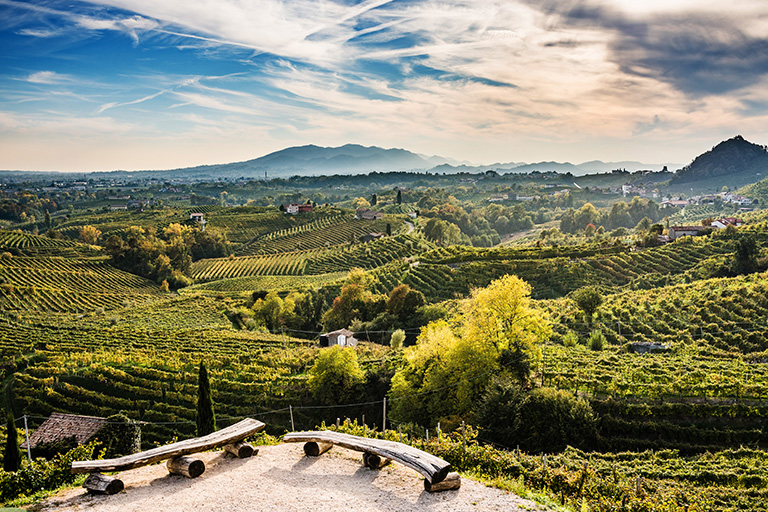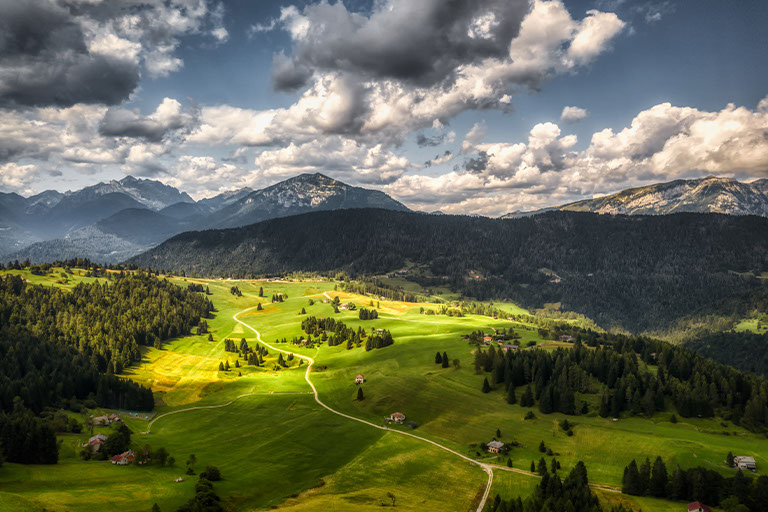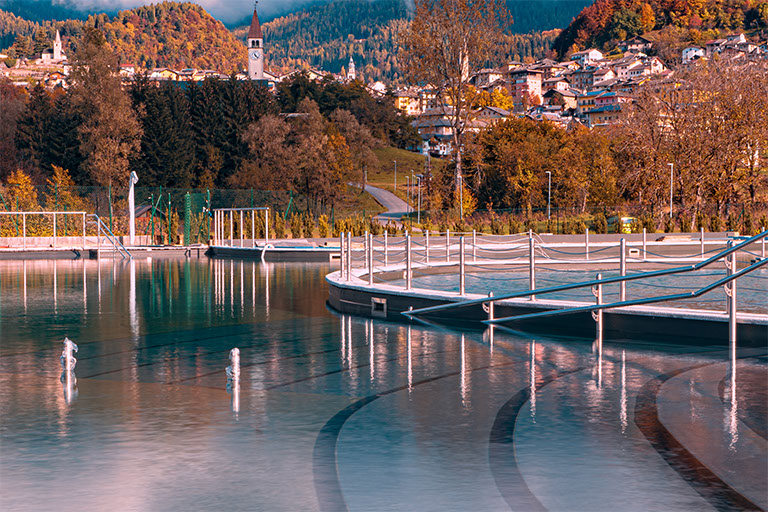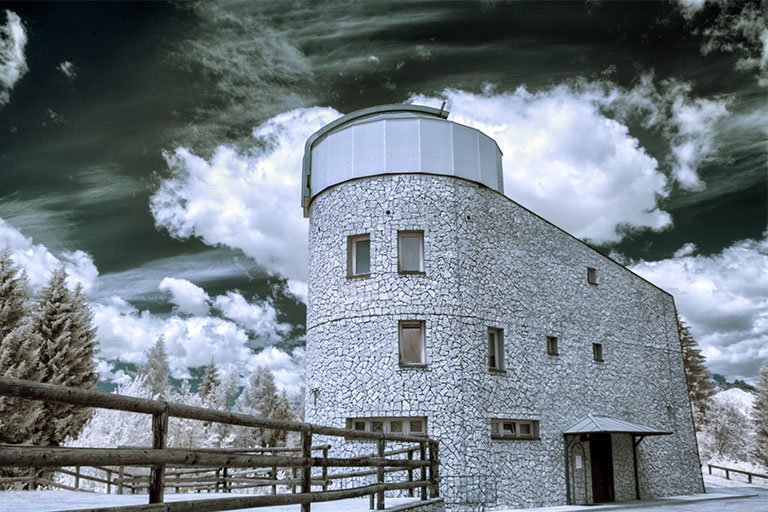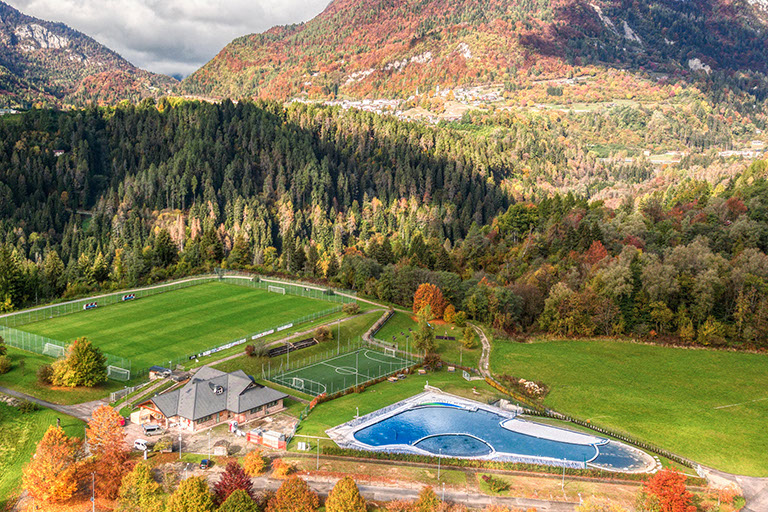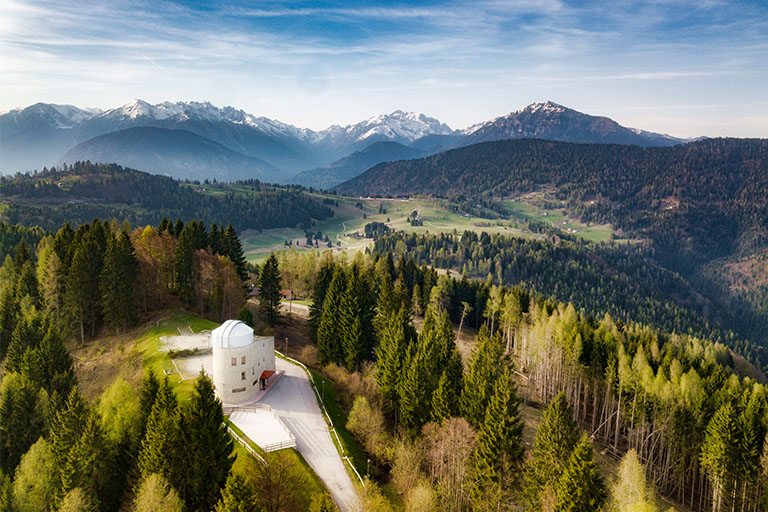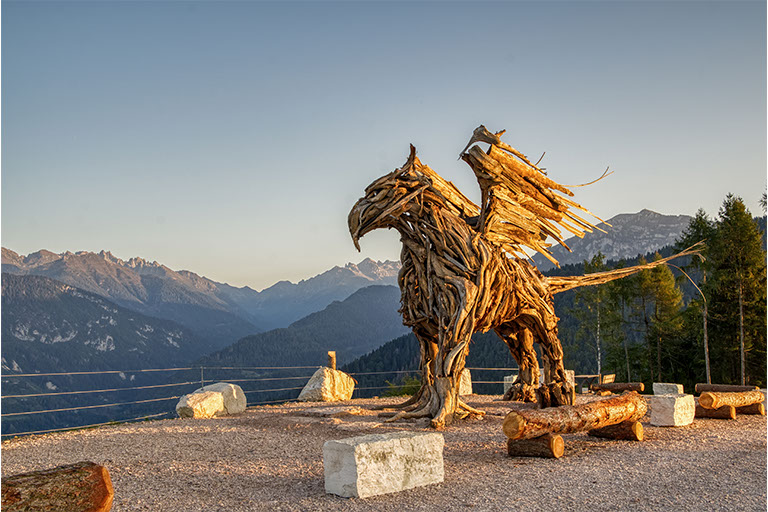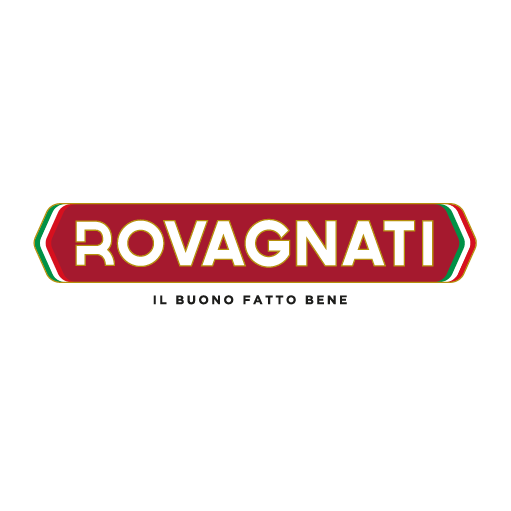profile
map
start / finish
itinerary timetable
tourist info
Host city:
Valdobbiadene
Panoramica
Historical Snippets
The first historical document known to mention Valdobbiadene dates back to 1116, when the Holy Roman Emperor Henry V was establishing the boundaries of the various communities in the region. The Valdobbiadene area was strategically located on one of the routes leading north and it started to grow in importance, undergoing both demographic and economic development.
In the 12th and 13th centuries, the area was ruled by the Da Carrara, Ezzelini and Da Camino families, as well as the Commune of Treviso. Each change of hands was preceded by sieges, destruction and plundering, until it was conquered by the Republic of Venice in 1391.
Although the latter remained the main political power, Valdobbiadene – which was divided into 15 rural communities called Regole gained a semblance of autonomy thanks to a self-government system. The heads of families democratically elected a group of men called Merighi from within their own ranks. The arrival of Napoleon and the subsequent period of Austrian rule led to the disappearance of the Regole and the rise of municipalities: Valdobbiadene, San Pietro di Barbozza and Bigolino, which would later be merged in the Municipality of Valdobbiadene.
In the 19th century, Valdobbiadene was an important silk production hub with a number of silk mills. In 1818, Pietro Piva and his sons Sigismondo and Celestino bought an old factory, expanded it and made improvements, bringing in specialist staff and machinery from Bologna. They subsequently created a new facility which became known as the Piva-Sisi hosiery factory.
Famous figures
Saint Venantius Fortunatus: the Bishop of Poitiers and an illustrious writer in late antiquity, he was born in Duplavilis – now known as Valdobbiadene – in approximately 540 AD to an old, wealthy Roman family and went on to study in the Treviso area. One of his most important works was a verse hagiography of Saint Martin: the four-book poem De Vita Sancti Martini.
Nicolò Bocassino: born in 1240 and elected pope in 1303 with the name Benedict XI, the distinguishing features of his pontificate were humility, strength of mind and a constant drive for peace. There is plaque and a papal coat of arms on his birthplace in the village of San Vito.
Benedict XI is also commemorated with a statue in front of the Church of Santi Vito & Modesto.
Points of interest
Art and Culture
Cathedral of Santa Maria Assunta: built in the 14th century, the original design featured a nave and two side aisles but radical reconstruction work between the 15th and 17th centuries gave it the rectangular layout with a single nave that can be seen today. Inside are exceptional works of art by Francesco Beccaruzzi, Paris Bordon and Palma il Giovane.
Cathedral bell tower: a sundial by the Ab- bot Giovanni Follador adorns the bell tower, which stands next to the cathedral and was designed by Francesco Maria Preti in the second half of the 18th century.
Villa dei Cedri: this graceful early 19th century Art Nouveau building originally housed a silk mill. The villa is now owned by the town council and used as a venue for events, conferences and concerts. It gets its name from a towering cedar (“cedro” in Italian) that stood for more than a hundred years in the verdant grounds around the villa, which are open to the public.
Church of San Floriano: there are magnificent views of the valley below from this church, which can be reached either by car or on foot along the road that leads from Valdobbiadene town centre to Pianezze. The oratory was completed in 1724 when construction work was finished on the beacon/bell tower, but it was mentioned in a will as long ago as 1424. It was destroyed by shelling in 1917-1918, then rebuilt and extended in the following years. Inside the church, a selection of old photographs shows the damage that it suffered during the First World War.
Landscape and Nature
Prosecco Superiore Circular Route: follow this walking route between the hills and the vineyards. It covers 15 km in total but it can be shortened to suit your needs thanks to a number of alternative paths. It is best to start and finish in the San Pietro di Barbozza church car park. Hikers can venture off the beaten track and explore vineyards and places such as Saccol and Santo Stefano, not to mention the famous Cartizze area.
International Donors’ Temple: from Valdobbiadene you can travel up to this site in Pianezze, at 1,071 metres above sea level. Based on an idea by a group of blood donors, it was built in 1962 on the spot where an artillery emplacement stood during the First World War. The Italian National Trust (FAI) has listed the Temple as one of the Places of its Heart.
Monte Cesen: this is the highest point in the Municipality of Valdobbiadene, reaching 1570 metres above sea level. The Monte Cesen area is crisscrossed with numerous dirt tracks and paths featuring various levels of difficulty and elevation gains. They provide the scope for a host of interesting hikes during which you can discover woods, pastures, shepherds’ huts and their traditional, locally made products.
Montagnola: this hill rises up above Settolo Basso, on the left bank of the Piave River. During the First World War, the area was oc- cupied by Austro-Hungarian troops, who built widespread defensive works. There is a trench and a number of installations with soldier-like outlines that provide information about the local area and its history, as well as offering mar- vellous views of Valdobbiadene from above.
Passo del Brocon
Overview
The Brocon Pass is a bridge between the Tesino plateau and the Vanoi valley.
During the summer season, the Brocon Pass is a popular tourist destination, especially for its range of excursions and walks with splendid views. The winter season is all about skiing, with a vast choice of fun activities on the snow, from downhill skiing to snowboarding, from cross-country skiing to mountaineering as well as more family-oriented forms of entertainment. From a historical point of view, the pass was an important strategic point during the two world wars due to its location. Signs of the conflicts, such as underground bunkers and trenches dug by the Austrian militia, are still visible today.
Local cuisine
Typical and genuine products can be tasted in the restaurants of the Valsugana del Tesino, discovering the ancient flavours of the Lagorai and enjoying products and dishes that have contributed to writing the history of these valleys.
Le Verde: local cuisine is closely linked to the territory and characterised by simple dishes using the products of the land, as is the case for all Trentino cuisine. Among the vegetables, an important food resource was once potatoes, beans, turnips and cabbage; the latter, thanks to fermentation processes inside wooden tubs, were preserved both in the form of sauerkraut and “green”. But unlike the better-known sauerkraut, found throughout the Alps and in much of the Germanic world, “le verde” can only be found in the Tesino basin, it is still particularly appreciated and proposed according to ancient recipes, such as ‘Smacafame’, or combined with tasty meat cuts.
Malga cheese: the alpine dairymen and shepherds who spend the summer months in the mountains to graze their cows and produce cheese, ricotta and butter are the clearest symbol of the ancient rhythms and deep-rooted traditions of the Lagorai. Malga cheese is capable of bringing back to the palate all the fragrances of high-altitude pastures. Malga cheese differs from mass-produced cheese because it cannot be separated from the territory: the milk from grazing cows has unique organoleptic characteristics that make it absolutely unmistakable.
The small fruits of Tesino: strawberries, blackberries, raspberries and blueberries, as well as white and red currants. So many fruits are cultivated by the young entrepreneurs of local farms, offering the possibility of savouring the true taste of the mountain.
Points of interest
Biolago Castello Tesino: set in the greenery of the sports area, the Biolago represents an additional opportunity for relaxation and contact with nature. The project began in 2014. After a brief interruption, works were resumed between 2017 and 2018 and have recently come to completion with the changing rooms, restrooms and the further improvement of the surrounding green area. The facility, a new added value to the valley, has a bathing surface of 700 square metres, reaches a maximum height of 1.40 metres and includes an indoor children’s pool with a maximum height of 70 cm.
Celado Astronomical Observatory – Castello Tesino: the Astronomical Observatory stands at an altitude of 1260 m on the south-western edge of Celado, a plateau located north of Asiago. Inside, the facility has a large lecture hall used for workshops and introductory guided tours. A well-stocked library of books on astronomy is also available.
The Tesino Griffon: the Tesino Griffon is the new Land Art work created by artist Marco Martalar. After more than 2 months of work, 35 quintals and 2000 pieces, the Griffon, 6 metres high and 9 metres long, dominates like a guardian over the magnificent town of Celado. Situated on the border between the two regions of Trentino and Veneto, the mythological figure of the griffon is meant to symbolise the union between the two regions, which is represented in the Veneto lion and the Trentino eagle.
Funivie Lagorai Marande Castello Tesino ski areas: in winter, Tesino turns into a splendid destination for ski lovers. With its 15 km of slopes, the Funivie Lagorai ski resort offers fans of this sport a variety of options. The Tesino basin, situated in the eastern side of Valsugana, is embraced by the Lagorai mountain chain, representing a perfect corner for those who wish to spend their holidays in the snow in an uncontaminated landscape. In addition to winter walking and snowshoeing routes, ski mountaineering is also popular in this valley.
The Cinte Tesino Adventure Park: the adventure park is a fun way to experience the mountains as well as to test your skills and courage. The park will let you rediscover the beauty of the Trentino forests thanks to its 5 routes of varying difficulty, up to 15 metres high, with hanging obstacles, ropes, lianas and the adrenalin rush of our flylines.
“Per Via” Museum – Pieve Tesino: The Per Via Museum was founded in 2014 in Pieve Tesino, on the eastern borders of the Autonomous Province of Trento, with the aim of remembering and recounting the epic deeds of the itinerant print sellers who, between the 18th and 19th centuries, rewrote the history of the Tesino valley and made it famous worldwide. The Museum collects and preserves the memory of the many men and women who were protagonists of this story, their courage, resourcefulness and even sacrifices.
Alcide De Gasperi’s birthplace – Pieve Tesino: opened to the public in 2006, the Museum is housed in the building where former Prime Minister and signer of the Italian Constitution Alcide De Gasperi was born, a symbolic place where the long and intense journey of this remarkable man began.


